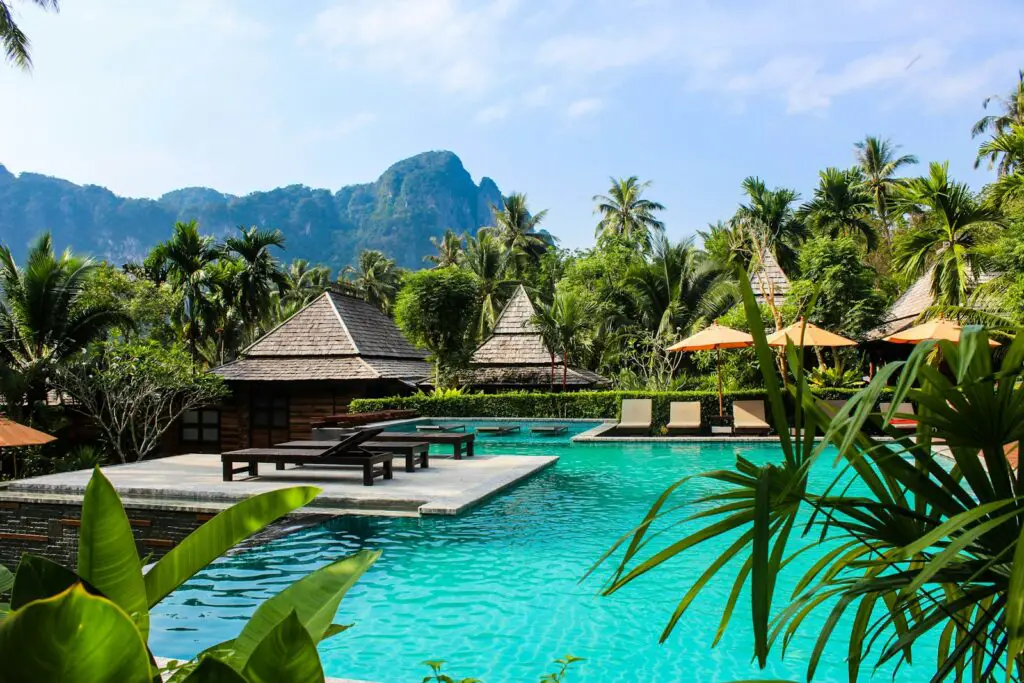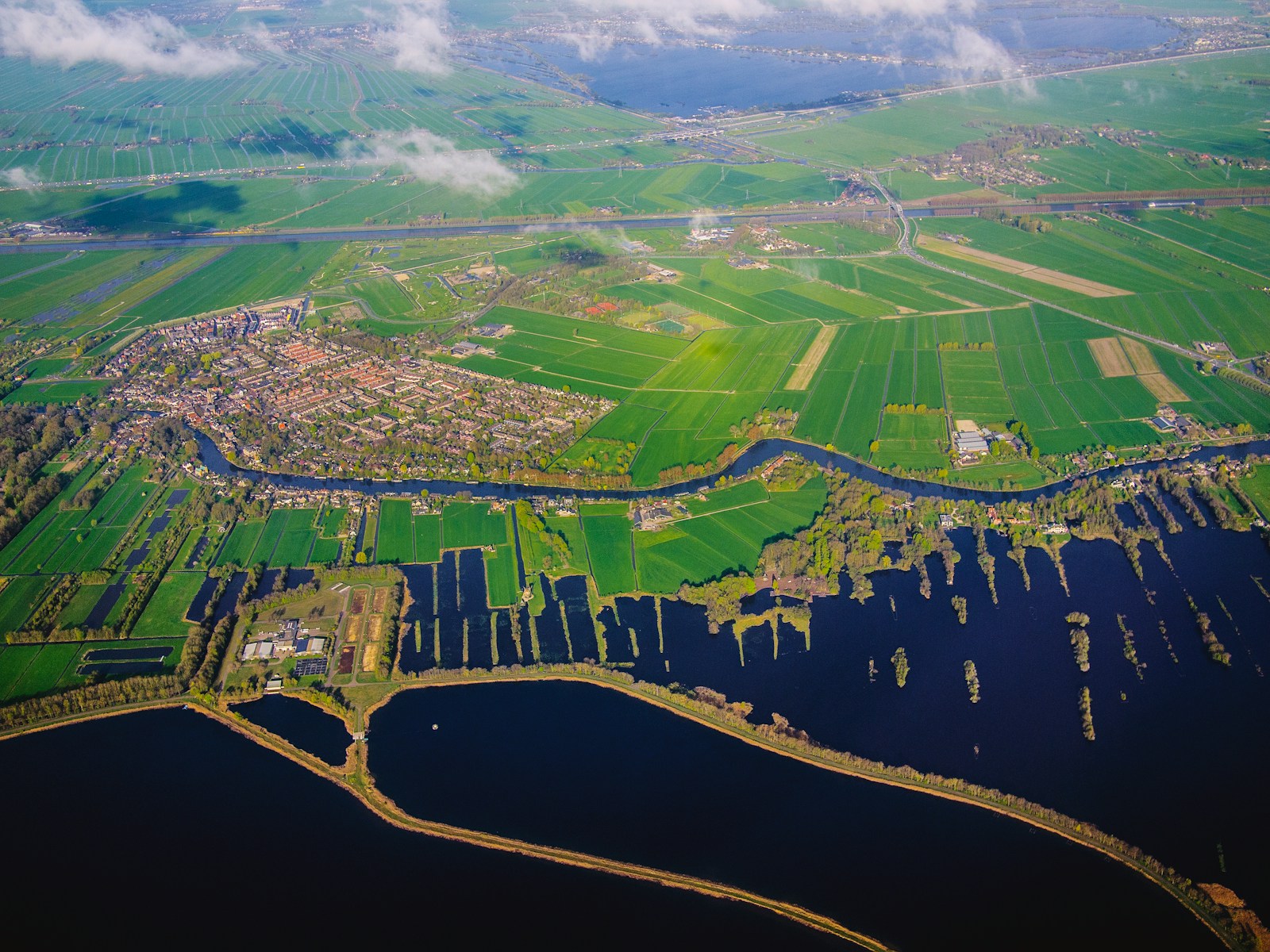Introduction to Multi-Country Travel Planning
Embarking on a multi-country trip involves meticulous planning to ensure a seamless and enjoyable experience. Travelers must consider several critical aspects when planning such trips. Coordination, timing, budgeting, and understanding diverse cultural norms are essential for a successful journey.
Key Considerations:
- Passport and Visa Requirements:
- Verify the passport validity for at least six months beyond the return date.
- Research visa requirements for each destination.
- Obtain necessary visas in advance, if possible.
- Itinerary Planning:
- Define primary destinations and key attractions.
- Identify travel routes and modes of transportation between countries.
- Allocate appropriate time for each location, factoring in transit time.
- Budgeting:
- Estimate the overall budget, covering flights, accommodations, food, and activities.
- Consider currency exchange rates and availability of ATMs or banking services.
- Allocate an emergency fund for unexpected expenses.
- Health and Safety:
- Check for required vaccinations and medications for each country.
- Research local health facilities and emergency contacts.
- Understand travel insurance options and what they cover in different countries.
- Cultural Awareness:
- Research cultural norms, languages, and etiquette of each destination.
- Respect local customs and traditions.
- Learn basic phrases in the local languages to enhance communication.
- Accommodation and Transportation:
- Book accommodations in advance to secure options and better rates.
- Compare different types of lodging, such as hotels, hostels, and vacation rentals.
- Plan transportation within and between countries, including flights, trains, and car rentals.
- Packing:
- Pack versatile clothing suitable for various climates and activities.
- Prepare for different weather conditions by checking forecasts.
- Ensure all essential documents, electronics, and travel accessories are included.
Effective coordination of these elements will lead to a well-structured and enjoyable multi-country trip. Proper research, organization, and flexibility are fundamental to overcoming potential challenges and making the most of the travel experience.
Setting Your Travel Goals and Priorities
When commencing the planning of a multi-country trip, it is paramount to first identify travel goals and priorities. This step acts as the foundation for the entire travel itinerary. The goals may vary greatly among travelers, ranging from cultural exploration to adventure activities.

Determine the Main Objective
- Cultural Immersion:
- Explore historical landmarks
- Visit museums and galleries
- Attend local festivals
- Adventure and Activities:
- Hike in national parks
- Engage in water sports
- Participate in local adventure tours
- Relaxation and Leisure:
- Spend time on picturesque beaches
- Enjoy spa and wellness retreats
- Experience luxury dining
Prioritize Destinations
- List Desired Countries: Create an initial list of countries that align with the overall travel objective.
- Research Highlights: For each country on the list, identify key attractions, experiences, and events.
- Time Allocation: Determine the amount of time to dedicate to each country based on its significance to the primary travel goal.
Budget Considerations
- Travel Costs:
- Flight and transportation expenses between countries
- Accommodation costs in each destination
- Activity Costs:
- Entrance fees for attractions
- Costs for tours and guided activities
- Daily Expenses:
- Food and beverage budget
- Local transportation costs
Risk Management and Safety
- Health Precautions: Review necessary vaccinations and health advisories specific to each destination.
- Travel Insurance: Select an insurance plan that covers multi-country travel, including emergency medical services.
- Local Laws and Customs: Familiarize oneself with the laws, customs, and etiquette of each country to avoid any misunderstandings.
Seasonal Considerations
- Climate: Understand the weather patterns and seasons in each region to pack appropriately and plan activities accordingly.
- Peak and Off-Season: Be aware of peak tourist seasons which could affect prices and availability of accommodations and tours.
By setting clear travel goals and priorities, one establishes a focused and structured approach toward planning an enriching and memorable multi-country trip.
Choosing Your Destinations
Selecting destinations for a multi-country trip is a crucial step that requires careful consideration. Travelers need to align their interests, budget, and available time to ensure an enriching experience.
Research Potential Destinations
Extensive research helps in identifying countries that align with one’s interests. This involves reading travel blogs, watching documentaries, and exploring travel forums.
- Interest Alignment:
- Cultural aspects
- Historical landmarks
- Natural landscapes
- Seasonal Considerations:
- Weather patterns
- Best times to visit
- Local Events and Festivals:
- Unique events worth experiencing
- Public holidays
Budget and Expenses
Understanding the financial implications of each destination is vital. It is essential to consider:
- Cost of Living in each country
- Accommodation Prices
- Food and Beverage Costs
- Entrance Fees to tourist attractions
Visa Requirements
Each country has specific visa requirements. It’s important to check:
- Visa validity and duration
- Application fees
- Processing times
Safety and Health
Safety is paramount when choosing destinations. Consider:
- Travel Advisories:
- Government websites
- Travel insurance policies
- Health Precautions:
- Required vaccinations
- Availability of medical facilities

Geography and Travel Logistics
Proximity of countries and ease of travel between them play a significant role. Points to ponder:
- Flight Availability
- Cross-Border Transport Options
- Internal Transportation Systems
Time Allocation
Balancing time between destinations ensures a smooth travel experience:
- Duration of Stay at each location
- Transit Times between countries
- Rest Days to avoid travel fatigue
Cultural Alignment
Understanding and respecting local cultures enhances the travel experience:
- Language Barriers
- Cultural Differences
- Local Customs and Etiquette
By meticulously analyzing these factors, travelers can successfully choose destinations that offer both adventure and comfort.
Creating a Travel Itinerary
Creating a travel itinerary involves careful planning and attention to detail. A well-structured itinerary ensures that travelers make the most out of their multi-country trip. Here’s a structured approach to creating an effective travel itinerary:
- Research Destinations
- Identify the countries and cities to visit.
- Research each destination for essential attractions, local customs, and travel advisories.
- Understand the visa requirements and health regulations of each country.
- Prioritize Destinations
- List destinations in order of interest or significance.
- Determine the amount of time to spend in each location based on the activities and sights.
- Transport Logistics
- Decide on the mode of transportation between countries, such as flights, trains, or buses.
- Check schedules, book tickets in advance, and consider travel time and layovers.
- Keep a record of booking details and local transportation options at each destination.
- Accommodation Booking
- Research and book accommodation in advance.
- Choose locations near major attractions or transport hubs.
- Keep accommodation contact information and check-in/check-out timings handy.
- Daily Itinerary Planning
- Create a daily schedule that includes major attractions, dining options, and leisure time.
- Allow flexibility for unplanned activities or rest.
- Consider opening hours and peak times for popular tourist spots.
- Budget Management
- Allocate a daily budget considering transport, meals, entrance fees, and emergencies.
- Use travel apps to track expenses and find budget-friendly options.
- Emergency Preparedness
- Prepare a list of emergency contacts, including local embassies and consulates.
- Carry copies of important documents, such as passports and travel insurance.
- Familiarize with local emergency services and healthcare facilities.
- Pack Smartly
- Pack according to the weather conditions and planned activities.
- Keep essentials such as medications, a first-aid kit, and travel chargers.
Blockquote for attention:
“A detailed travel itinerary is the backbone of a successful multi-country trip. It helps travelers stay organized, prepared, and stress-free, ensuring an unforgettable experience across various destinations.”
Following these steps will streamline the process of creating a travel itinerary and enhance the overall travel experience.
Budgeting for Your Multi-Country Trip
Effective budgeting is essential for a successful multi-country trip. The process involves several steps to ensure that all potential expenses are accounted for, and resources are allocated appropriately to avoid overspending.
- Research and Plan:
- Destinations and Duration: Determine the number of countries to be visited and the length of stay in each. This will help in estimating overall costs.
- Accommodation Options: Investigate various types of accommodations, from hostels and budget hotels to vacation rentals. Use websites like Booking.com and Airbnb to compare prices.
- Transportation Costs: Consider all forms of transportation, including flights, trains, buses, and local transit options. Use aggregators like Skyscanner and Rome2Rio for comprehensive comparisons.
- Track Exchange Rates:
- Monitor the exchange rates for the currencies of the countries on your itinerary. Utilize currency converter apps to stay updated on fluctuations and ensure that spending power is maximized.
- Estimate Daily Expenses:
- Food and Drinks: Research typical food costs in each country to set a daily meal budget. Utilize resources like travel blogs and cost-of-living databases.
- Activities and Entertainment: Factor in costs for sightseeing, tours, museums, and other recreational activities. Booking in advance can often result in discounts.
- Create a Detailed Budget:
- Use a spreadsheet or budgeting app to itemize all anticipated expenses, including accommodations, transportation, food, activities, and emergencies.
- Allocate funds for unexpected costs such as medical emergencies or last-minute itinerary changes.
- Money Management Tools:
- Consider using budgeting apps like Trail Wallet or Mint to manage expenses in real-time. These tools help in tracking spending and adjusting the budget dynamically as needed.
- Cost-Saving Strategies:
- Travel Off-Peak: Traveling during off-peak seasons can result in significant savings in terms of accommodations and flights.
- Public Transport: Opt for public transport over taxis to reduce daily transportation costs.
- Local Cuisine: Dining at local eateries instead of tourist-oriented restaurants can stretch the budget further.
- Prebook Essentials:
- Book flights and accommodations in advance to lock in lower prices. Early booking often results in substantial savings.
- Insurance:
- Purchase comprehensive travel insurance that covers medical emergencies, trip cancellations, and lost belongings. This can prevent financial strain in unforeseen situations.
- Financial Buffer:
- Set aside an emergency fund separate from the main travel budget. This ensures quick access to additional funds if needed.
Meticulous planning and careful budgeting contribute significantly to a stress-free multi-country trip, allowing for flexibility and the enjoyment of a variety of experiences without financial worry.

Booking Flights and Transportation
Organizing flights and transportation is pivotal in planning a multi-country trip. Securing the best deals and minimizing travel time enhances the overall experience. The following steps offer guidance:
- Research and Compare Flights:
- Utilize fare comparison websites like Skyscanner, Momondo, and Google Flights.
- Set up fare alerts to monitor price fluctuations.
- Consider multi-city ticket options to save time and costs.
- Choosing the Best Time to Buy:
- Book international flights 4–6 months in advance.
- For domestic flights within each country, book 1–2 months ahead.
- Avoid peak holiday seasons to mitigate higher prices and crowded airports.
- Airline Alliances and Frequent Flyer Programs:
- Opt for airlines within alliances like OneWorld, Star Alliance, or SkyTeam to accumulate more miles.
- Enroll in frequent flyer programs to benefit from rewards and potential upgrades.
- Alternative Transportation Modes:
- Assess train services for intra-country travel, especially in Europe and Asia.
- Buses can be cost-effective for short distances.
- Consider renting a car for flexibility, especially in rural or less accessible areas.
- Local Transportation:
- Research public transportation options such as subways, trams, and buses.
- Download apps like Uber or Lyft for convenience in urban areas.
- Familiarize with local taxi services and ensure they use a meter to avoid overcharging.
- Securing Transfers:
- Pre-book airport transfers to avoid last-minute hassles.
- Evaluate shuttle services offered by hotels or local operators.
- Check for car rental options from the airport if planning to drive.
- Budget Planning:
- Allocate a travel budget, incorporating all transportation modes.
- Look out for discount passes which offer unlimited travel in certain regions or periods.
- Always have a contingency fund for unexpected travel expenses.
Remember, thorough research and early booking can result in significant savings and a smoother travel experience.
Following these steps will ensure that flights and transportation are efficiently managed, allowing travelers to focus on enjoying their multi-country trip.
Accommodation Strategies for Multiple Countries
Planning accommodations across various countries requires a methodical approach to ensure comfort, convenience, and cost-effectiveness. Early research and bookings can mitigate potential problems. Below are several strategies:
Research Local Accommodation Options
- Hotels and Hostels: Establishments often vary in quality and price from country to country. Investigate local reviews and ratings.
- Vacation Rentals: Platforms like Airbnb and VRBO offer a wide range of properties, often with unique features and local charm.
- Boutique Stays: Smaller, independent options provide a more personalized experience and distinct cultural immersion.
Book in Advance
- Peak Seasons: Secure accommodation well ahead of time during festivals, holidays, and tourist seasons.
- Budget Allocation: Booking in advance can help manage the budget more effectively, potentially unlocking discounts and special offers.
- Flexible Cancellations: Look for options that offer refundable or flexible cancellation policies.

Consider Location and Proximity
- City Center vs. Suburbs: Accessibility to key attractions, public transportation, and food options should influence decision-making.
- Safety and Security: Prioritize safer neighborhoods, especially in unfamiliar or high-risk areas.
Evaluate Amenities and Services
- Wi-Fi and Connectivity: Reliable internet access is essential for staying connected and planning daily activities.
- Room Features: Comfort items like air conditioning, heating, and in-room amenities enhance the overall stay experience.
- Customer Service: Opt for places with excellent customer support to assist with any issues that may arise.
Leverage Loyalty Programs
- Hotel Chains: Memberships in global hotel chains can accrue rewards points and offer exclusive discounts.
- Credit Card Programs: Travel-specific credit cards often come with benefits like free nights, upgrades, or cashback on bookings.
Utilize Travel Forums and Reviews
- Travel Blogs: Personal insights and reviews can provide a firsthand look into lodging experiences.
- Social Media Groups: Joining traveler forums or following travel influencers can uncover hidden gems and reliable options.
Tip: Combining accommodation types across different countries can enhance the travel experience by providing diverse living environments.
By thoughtfully planning and utilizing these strategies, one can optimize the logistics of accommodation across multiple countries, ensuring a seamless and enjoyable travel experience.
Visa and Passport Requirements
When planning a multi-country trip, understanding visa and passport requirements is critical. Requirements can vary significantly from one country to another, and it is important to research and prepare accordingly to avoid complications.
Passport Validity
- Ensure Passport Validity: Many countries require that a traveler’s passport be valid for at least six months beyond the intended departure date.
- Empty Pages: Make sure there are enough blank pages in the passport for entry and exit stamps.
Visa Requirements
- Research Visa Policies: Each country has distinct visa requirements based on nationality. Consult official government websites or reputable travel resources.
- Visa Types: Identify the type of visa required (e.g., tourist, business, transit). Requirements and processing times can vary.
- Tourist Visas: Often required for leisure travel.
- Business Visas: Necessary for professional activities.
- Transit Visas: Needed if passing through a country en route to another destination.
Visa Application Process
- Documentation: Gather required documentation, which typically includes completed application forms, passport-sized photos, and proof of accommodation.
- Submission: Submit the application either online, via mail, or in person at the embassy or consulate.
- Fees: Pay applicable visa fees; costs can vary by country and visa type.
- Timeframe: Factor in processing times, which may range from a few days to several weeks.
Electronic Travel Authorizations (ETAs) and e-Visas
- ETAs: Some countries offer ETAs that can be applied for online, providing a quicker and easier alternative to traditional visas.
- e-Visas: Electronic visas are also available for certain destinations and can streamline the application process.
Mutual Agreements and Visa Waivers
- Visa Waiver Programs: Some travelers may benefit from visa waiver agreements. For instance, the Schengen Area in Europe allows for visa-free travel for certain nationalities for up to 90 days.
- Mutual Recognition: Countries may have reciprocal agreements that ease entry requirements for citizens of each other’s countries.
Special Considerations
- Multiple-Entry Visas: Necessary if planning to enter and exit a country multiple times during the trip.
- Health Requirements: Some countries require proof of vaccinations (e.g., yellow fever) for visa issuance.
- Legal Restrictions: Be aware of any legal restrictions or travel advisories that may affect visa eligibility.
Understanding and preparing for visa and passport requirements ensures a smooth, hassle-free multi-country trip. Always plan ahead and consult official sources for the most accurate and up-to-date information.
Health and Safety Preparations
When planning a multi-country trip, health and safety preparations are critical. To ensure a safe and enjoyable journey, consider the following steps:
Vaccinations and Health Checks
- Research Required Vaccinations:
- Check the CDC or WHO websites for required and recommended vaccinations for each country on your itinerary.
- Schedule appointments with a healthcare provider well in advance.
- Routine Health Checkup:
- Have a comprehensive medical checkup before departure.
- Obtain a sufficient supply of prescription medications.
Travel Insurance
- Purchase Travel Insurance:
- Ensure coverage for medical emergencies, trip cancellations, and lost baggage.
- Examine policy exclusions and ensure coverage includes all countries in the itinerary.
Emergency Contacts and Medical Facilities
- Compile Emergency Contact Information:
- List local emergency numbers, U.S. embassies, and consulates.
- Include contact information for family or friends back home.
- Identify Nearby Medical Facilities:
- Research hospitals and clinics available in each destination.
- Make note of any language barriers and consider learning basic medical vocabulary in the local language.
Safety Precautions
- Stay Informed:
- Monitor travel advisories and warnings from your government.
- Register with your embassy or consulate if offered.
- Personal Safety:
- Avoid unsafe areas, particularly at night.
- Use reputable transportation services and accommodations.
- Be mindful of cultural norms and dress codes to avoid unwanted attention.
Hygiene and Cleanliness
- Pack Health Essentials:
- Include hand sanitizers, disinfectant wipes, and a personal first aid kit.
- Bring sufficient sanitary supplies for the duration of the trip.
- Food and Water Safety:
- Research safe eating and drinking practices for each region.
- Prefer bottled water and avoid uncooked street food.
Staying Physically Healthy
- Stay Hydrated and Rested:
- Drink plenty of water and rest adequately.
- Adjust to time zone changes by planning rest days as needed.
- Exercise Caution with Activities:
- Engage in adventure activities with established, reputable companies.
- Ensure safety gear is provided and fits properly.
By following these health and safety preparations, travelers can minimize risks and focus on enjoying their multi-country adventure.
Packing Tips for a Multi-Country Adventure
Embarking on a multi-country trip requires strategic packing to manage varying climates, activities, and customs efficiently. Below are essential packing tips to ensure a smooth experience across diverse destinations.
1. Choose Versatile Clothing
Opt for clothing that can be layered and mixed and matched.
- Basics: Include neutral-colored tops, bottoms, and a reliable jacket.
- Layering Pieces: Lightweight sweaters and cardigans for colder regions.
- Accessories: Scarves, hats, and gloves for added warmth without bulk.
2. Pack Light and Smart
Maximize space and minimize weight.
- Rolling Technique: Rolling clothes instead of folding saves space.
- Compression Bags: Use vacuum bags for bulkier items.
- Travel-Friendly Fabrics: Choose quick-drying, wrinkle-resistant materials.
3. Create a Packing List
Maintain a list to stay organized and avoid overpacking.
- Essentials: Passport, travel insurance, and local currency.
- Technology: Phone, charger, adapters, and power bank.
- Toiletries: Travel-sized bottles adhering to airline regulations.
4. Weather-Appropriate Gear
Anticipate weather changes.
- Rain Gear: Compact umbrella and waterproof shoes.
- Cold Weather: Thermal wear and insulated layers.
- Warm Weather: Breathable fabrics and sunscreen.
5. Personal Comfort
Enhance travel comfort.
- Travel Pillow: For long flights or bus journeys.
- Snacks: Healthy, non-perishable options.
- Entertainment: Books, e-readers, or downloaded media.
6. Keep Essentials Accessible
Organize items for easy access.
- Carry-On Bag: Important documents, medications, and a change of clothes.
- Daypack: For daily excursions, including water bottle, maps, and camera.
- Wallet: With RFID protection for added security.
7. Respect Local Customs
Adapt clothing to local cultures and customs.
- Modest Wear: For conservative regions, pack clothes that cover shoulders and knees.
- Headscarves: When visiting religious sites.
8. Health and Safety
Prioritize health and safety above all.
- First Aid Kit: Basic medical supplies and prescription medications.
- Insect Repellent: For regions with mosquito-borne diseases.
- Hand Sanitizer: For hygiene on the go.
9. Footwear Choices
Pack functional and comfortable footwear.
- Walking Shoes: Supportive and broken-in for extensive walking.
- Sandals: For warmer climates.
- Dress Shoes: For formal events or dining.
10. Limit Valuables
Minimize valuable items.
- Jewelry: Leave expensive pieces at home.
- Gadget Security: Use anti-theft backpacks and keep electronics secure.
Employ these packing strategies to navigate different countries’ demands efficiently, ensuring the journey is enjoyable and hassle-free.
Cultural Etiquette and Local Customs
Understanding cultural etiquette and local customs is crucial when planning a multi-country trip. Cultural sensitivity enhances interactions and fosters mutual respect.
Research Cultural Norms
- Investigate each country’s common practices.
- Learn about traditional greetings and good manners.
- Understand social norms regarding personal space and public behavior.
Dress Codes
- Respect clothing customs, especially in religious or conservative areas.
- Wear appropriate attire when visiting temples, churches, or other places of worship.
- Be aware that some countries may have strict clothing regulations.
Food and Dining Etiquette
- Familiarize oneself with local dining customs.
- Observe table manners in various cultures.
- Understand tipping practices, which vary greatly between countries.
Communication Styles
- Learn basic phrases in the local languages.
- Be mindful of body language, as gestures carry different meanings.
- Note the formality levels when addressing locals.
Photography
- Always ask for permission before taking photos of people.
- Be respectful when photographing cultural sites or religious ceremonies.
- Some locations may prohibit photography; obey posted signs or local guidelines.
Gift-Giving Etiquette
- Understand the significance of gift-giving in various cultures.
- Learn what types of gifts are appropriate and how they should be presented.
- Be aware of any taboos surrounding gift-giving.
Visiting Local Homes
- Follow local customs when invited to a native’s home.
- Remove shoes if it is customary.
- Bring a small gift as a token of appreciation, if appropriate.
Public Conduct
- Abide by local laws and regulations.
- Avoid behaviors that are considered rude or inappropriate in the host country.
- Participate respectfully in local traditions and festivals.
Religious Sensitivities
- Respect religious practices and sites.
- Dress modestly when entering places of worship.
- Refrain from disruptive behavior during religious events or rituals.
Transportation Etiquette
- Know the expected behavior on public transportation.
- Observe queueing norms.
- Offer seats to the elderly, disabled, or pregnant women where customary.
By adhering to these guidelines, travelers ensure a respectful and enriching experience across diverse cultures.
Technology and Connectivity Abroad
When planning a multi-country trip, technology and connectivity are critical aspects that enhance the travel experience. Travelers should begin by ensuring their electronic devices, such as smartphones, tablets, and laptops, are compatible with international voltage and plug types. Adapters and voltage converters may be necessary depending on the destination.
SIM Cards and Mobile Data
- Pre-Paid SIM Cards: Purchasing a local SIM card in each country can significantly reduce roaming charges. These SIM cards often come with data packages suitable for short-term stays.
- International SIMs: An international SIM card offers the convenience of one number across multiple countries. Though potentially more expensive, it streamlines communication.
- Mobile Hotspots: Portable Wi-Fi devices provide internet access on-the-go. Some telecom providers offer global plans that support multiple countries.
Reliable Internet Access
- Free Wi-Fi: Most airports, hotels, and cafes provide free Wi-Fi. However, connections may vary in speed and security.
- Wi-Fi Security: Using a VPN (Virtual Private Network) ensures secure internet browsing, protecting sensitive information from potential cyber threats.
- International Plans: Check with your home mobile carrier for international plans that offer data and calling options abroad. These plans can be more cost-effective than local SIM cards in some cases.
Device Preparedness
- Power Banks: Carrying a fully charged power bank is essential, especially during long travel days where access to power outlets might be limited.
- Cloud Storage: Utilize cloud services for backing up important documents and photographs. This provides accessibility across devices and prevents data loss.
- Travel Apps: There are numerous travel apps designed to assist with navigation, translation, and booking accommodation. Research and download these apps before departure.
Communication Platforms
- VoIP Services: Platforms like WhatsApp, Skype, and Viber are indispensable for keeping in touch with family and friends. They work well with Wi-Fi or mobile data, reducing international calling charges.
- Local Communication Apps: In some countries, local messaging apps may be more prevalent. Downloading these apps can facilitate better communication with locals and services within the country.
Tech-Savvy Health
- Health Apps: Utilize health apps to monitor your well-being, especially when traveling across multiple time zones. These apps can also store vital health information.
- Emergency Contacts: Store local emergency numbers and your country’s embassy contacts in your phone for immediate access.
Planning for technology and connectivity abroad ensures a seamless travel experience, keeping one connected, informed, and prepared.
Managing Money and Currency Exchange
Managing money and currency exchange effectively is crucial for a seamless multi-country trip. Travelers should be aware of currency exchange rates, transaction fees, and secure methods for accessing funds abroad.
1. Understand Exchange Rates Understanding current exchange rates between home currency and destination currencies is pivotal. Rates fluctuate daily, and travelers can utilize online tools like XE.com or financial news websites to monitor rates. Familiarizing oneself with local currency can also help in budgeting daily expenses.
2. Notify Banks and Credit Card Companies Notifying banks and credit card companies of travel plans is essential to avoid potential card suspensions due to suspicious activity. This notification can often be done through a phone call or online account management system.
3. Accessing Cash Abroad Travelers should consider the most economical ways to access cash:
- ATMs: Usually, the most favorable exchange rates are obtained through ATMs abroad using a debit card. However, it is essential to verify the bank’s international withdrawal fees.
- Currency Exchange Offices: These often have higher fees but can be convenient in some circumstances. Comparing rates at different kiosks can yield better deals.
4. Using Credit Cards Using credit cards can offer several benefits:
- Global Acceptance: Credit cards from major networks like Visa, MasterCard, and American Express are widely accepted.
- Foreign Transaction Fees: Many credit cards charge a foreign transaction fee (usually around 3%). Look for cards with no foreign transaction fees to save on costs.
- Rewards and Protections: Many credit cards provide travel rewards and protections, such as travel insurance and emergency assistance.
5. Carrying Emergency Funds It is prudent to have a small amount of local currency upon arrival for situations where cards are not accepted. Additionally, having a secondary card or an emergency fund in U.S. dollars or Euros can be beneficial for unforeseen circumstances.
6. Using Digital Wallets and Travel Cards Digital wallets (like Apple Pay, Google Pay) and multi-currency travel cards (like Revolut or Wise) are increasingly popular for their convenience and competitive exchange rates.
7. Monitoring Spending and Budgeting Monitoring spending through real-time updates on banking apps or budgeting apps (e.g., YNAB, Mint) helps in retaining control over finances. This practice ensures adherence to the travel budget and prevents overspending.
Efficient management of money and currency exchange can significantly enhance the travel experience, reducing stress and ensuring that funds are optimally utilized throughout the trip.
Travel Insurance and Safety Precautions
Travel insurance is a crucial aspect of planning a multi-country trip. It provides coverage for unforeseen events such as medical emergencies, trip cancellations, lost luggage, and other travel-related risks. Ensuring comprehensive travel insurance is essential for a worry-free journey.
There are several types of travel insurance policies:
- Single Trip Insurance: Covers one specific trip, ideal for infrequent travelers.
- Multi-Trip Insurance: Suitable for those planning multiple trips within a year.
- Medical Evacuation Insurance: Provides coverage for medical emergencies requiring evacuation.
- Cancel for Any Reason (CFAR): Offers flexibility but is more expensive.
When evaluating travel insurance options, consider the following factors:
- Coverage Limits: Ensure the policy covers substantial medical expenses.
- Duration of Coverage: Verify the policy covers the entire trip duration.
- Destination-Specific Risks: Check for coverage in all intended countries.
- Policy Exclusions: Be aware of exclusions, including pre-existing conditions.
In addition to travel insurance, safety precautions are paramount. Researching safety advisories and alerts for each destination can help avoid potential risks.
Tips for Enhancing Safety:
- Register with the Local Embassy: In case of emergencies, being registered can expedite assistance.
- Stay Informed: Regularly check travel advisories from sources like the U.S. Department of State.
- Keep Copies of Important Documents: Maintain digital and physical copies of passports, visas, and insurance details.
- Emergency Contacts: Have a list of emergency contact numbers, including local authorities and the nearest embassy.
- Local Laws and Customs: Follow local laws and respect cultural practices to avoid conflicts.
Personal Safety Measures:
- Blend In: Avoid drawing attention; dress modestly and behave politely.
- Stay Connected: Inform someone of your itinerary and periodically check in.
- Avoid Risky Areas: Steer clear of high-risk areas, especially after dark.
- Use Reputable Transport: Prefer licensed taxis and ride-sharing services over unregulated options.
By combining comprehensive travel insurance and adhering to safety precautions, travelers can ensure a secure multi-country trip.
Sustainable and Responsible Travel Practices
When planning a multi-country trip, it is vital to consider the environmental and social impact of travel choices. Travelers can adopt various sustainable and responsible practices to minimize their footprint and promote positive interactions with local communities.
Choosing Eco-friendly Transportation
Selecting low-impact transportation options significantly reduces carbon emissions:
- Trains and Buses: Opting for trains or buses over flights decreases carbon emissions substantially.
- Carpooling and Ridesharing: Sharing rides or using public transportation curtails individual carbon footprints.
- Bicycles and Walking: Intra-city travel via bicycles or walking supports health and sustainability.
Accommodations with Environmental Standards
Selecting environmentally conscious accommodations ensures support for sustainable practices:
- Eco-friendly Hotels: Look for hotels with green certifications such as LEED or Green Key.
- Local Guesthouses: Staying in local guesthouses promotes economic benefits for communities.
- Campsites and Hostels: These are often more sustainable options, with lower energy consumption.
Waste Reduction Practices
Minimizing waste can greatly lessen environmental impacts:
- Reusable Items: Carry reusable water bottles, shopping bags, and utensils to avoid single-use plastics.
- Proper Disposal: Dispose of waste properly, using recycling and composting facilities where available.
- Low-waste Packaging: Seek products with minimal or biodegradable packaging.
Supporting Local Economies
Engaging with the local economy fosters economic growth and cultural preservation:
- Local Markets: Purchase goods from local markets and artisans.
- Local Tours: Employ local guides and tour operators to enrich travel experiences and support local livelihoods.
- Ethically Made Products: Purchase ethically sourced souvenirs, avoiding any items detrimental to wildlife or cultural heritage.
Cultural Sensitivity and Interaction
Respectful engagement with local cultures is essential for responsible travel:
- Dress and Behavior: Adhere to local dress codes and customs to show respect.
- Learning Basic Phrases: Learning a few words or phrases in the local language demonstrates goodwill and enhances interactions.
- Responsible Photography: Seek permission before taking photographs of individuals or culturally sensitive sites.
By incorporating these sustainable and responsible practices, travelers contribute positively to the destinations they visit. They ensure their journeys are not only memorable but also beneficial to the environment and local communities.
Useful Apps and Tools for Multi-Country Travel
Navigating through multiple countries can be complex, but with the right digital tools, travelers can simplify their journeys. Below is a curated list of essential apps and tools designed to assist with various aspects of multi-country travel.
Flight and Accommodation Bookings
- Skyscanner
- Compares prices across numerous airlines and travel agencies.
- Offers features such as fare alerts and flexible date searches.
- Booking.com
- Provides a wide range of accommodation options.
- Includes user reviews and free cancellation policies on many bookings.
- Airbnb
- Enables travelers to book stays in local homes and unique accommodations.
- Offers the experience of living like a local in each destination.
Currency and Finances
- XE Currency
- Real-time exchange rate updates.
- Allows offline currency conversion following a one-time download.
- Revolut
- Facilitates multi-currency bank accounts and foreign exchange.
- Includes features like international spending without fees and travel insurance.

Navigation and Local Transit
- Google Maps
- Detailed maps with step-by-step navigation.
- Provides information on public transport, walking routes, and driving directions.
- Rome2rio
- Comprehensive transport search engine.
- Displays routes and prices for flights, trains, buses, ferries, and car rentals.
Language Translation
- Google Translate
- Supports instant text, speech, and photo translation.
- Offline translation available for numerous languages.
- Duolingo
- Language learning app with bite-sized lessons.
- Ideal for picking up basic phrases and vocabulary quickly.
Connectivity and Communication
- WhatsApp
- Free messaging app that uses internet data to send texts, voice notes, and make calls.
- Supports international communication without extra charges.
- VPN Services (e.g., ExpressVPN)
- Provides secure internet connection and access to geographically restricted content.
- Ensures privacy and safety on public Wi-Fi networks.
Travel Planning and Itineraries
- TripIt
- Centralizes travel itineraries by syncing with email confirmations.
- Provides a master document with all trip details and real-time alerts.
- Google Trips (although discontinued, replaced by Google Travel)
- Offers a digital travel assistant with activity suggestions, reservations, and trip plans.
- Integrates seamlessly with other Google services for ease of access.
Dining and Local Experiences
- Yelp
- Source of user-generated reviews and ratings for restaurants and local businesses.
- Helps travelers discover highly recommended eateries and services.
- TripAdvisor
- Extensive repository of reviews and recommendations for activities, dining, and accommodations.
- Provides travel forums for advice and answers to specific traveler queries.
These tools equip travelers with vital resources to handle booking complexities, currency exchanges, local navigation, language barriers, and trip planning effectively.
Conclusion: Making the Most of Your Multi-Country Journey
Planning a multi-country trip can be both exhilarating and complex. Following a well-structured plan ensures a smooth and enjoyable experience. Emphasizing research, budgeting, and flexibility helps travelers adapt to unforeseen circumstances while maximizing enjoyment.
Key Takeaways:
- Thorough Research: It is crucial to investigate each destination’s climate, cultural norms, key attractions, and political stability. Reliable sources include travel blogs, government travel advisories, and local tourism websites.
- Detailed Itinerary: To optimize time and resources, outline an itinerary that balances structured activities and free time. Consider using apps and digital tools for organizing schedules, reservations, and essential information.
- Proper Documentation: Ensure all travel documents—passports, visas, travel insurance—are valid and accessible. Digital copies stored in cloud services can serve as backups.
Budgeting Tips:
- Expense Tracking: Utilize budgeting apps to monitor daily spending and categorize expenses. Keeping track of costs helps in staying within budget.
- Smart Accommodation: Opt for a mix of lodging options that include budget-friendly hostels and cost-effective Airbnb rentals. This strategy can maintain comfort without overspending.
- Local Transportation: Investigate transportation options such as regional trains, buses, or car rentals. The economical choice varies based on the country and region.
Safety Considerations:
- Health Precautions: Be aware of local health advisories and required vaccinations. Carry a first aid kit and any necessary medications.
- Safety Preparedness: Familiarize yourself with emergency contacts in each country, ensure you have travel insurance covering healthcare and emergencies.
Cultural Sensitivity:
- Respect Customs: Show respect for local traditions and customs. Engaging with residents enriches the travel experience.
- Language Basics: Learning basic phrases in the local language can facilitate smoother interactions and show respect for the local culture.
Flexibility and Enjoyment:
- Stay Adaptable: Plans can change due to unforeseen events. Staying flexible allows for a stress-free travel experience.
- Cherish Experiences: Focus on creating memorable experiences rather than merely ticking off attractions. Enjoy the journey itself.


Leave a Reply